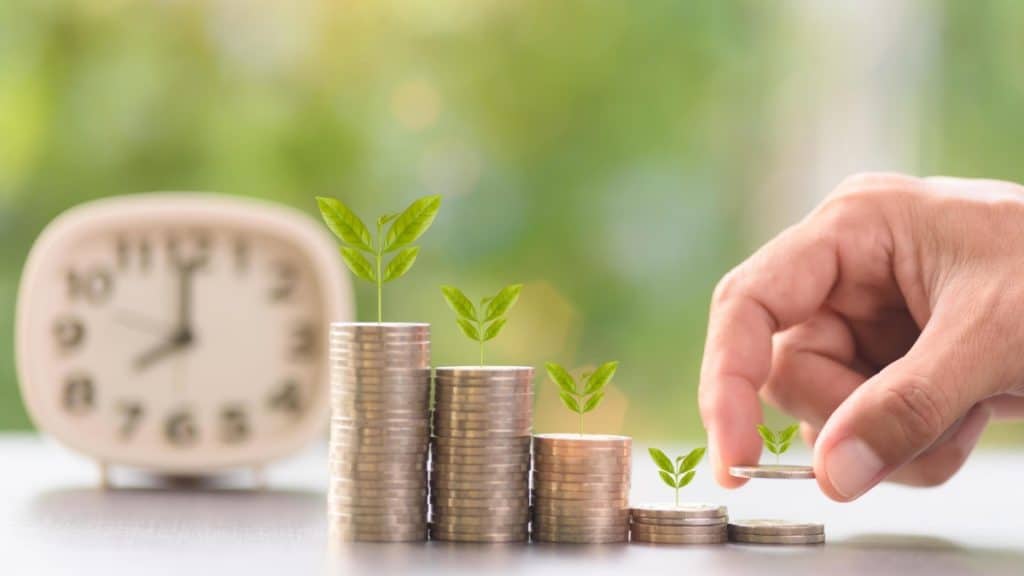Investing isn’t just about growing your money—it’s about shaping your future and the world around you. What if your investments could deliver strong returns while also fostering positive change? This guide dives into the strategies and principles of sustainable investment planning, helping you build wealth that aligns with your values and supports a more sustainable planet. Sustainable wealth growth begins with informed decisions, and Matrixator connects traders to experts who can provide the necessary educational foundation.
Crafting a Long-Term Investment Vision Aligned with Sustainability Goals
When planning for the future, it’s vital to think beyond just the numbers. Sure, we all want to grow our wealth, but what if you could also make a positive impact on the world?
A long-term investment vision isn’t just about making money—it’s about aligning your financial goals with your personal values and sustainability ambitions. This is where sustainable investing comes into play. It allows you to support companies that are not only profitable but also responsible and ethical in their practices.
Start by asking yourself: What matters most to you? Is it clean energy, fair labor practices, or perhaps innovative technology that reduces waste? Think about the causes you care about deeply. Aligning your investments with these priorities can give you a sense of purpose, and let’s be honest, it feels good to know your money is doing some good out there.
A useful strategy is to set clear, achievable goals. You don’t need to aim for the moon right away. Begin with small, steady steps. Consider setting a timeline for when you want to achieve certain milestones, like buying your first green bond or shifting a portion of your portfolio to eco-friendly companies. By breaking it down, the process feels less overwhelming, and each step brings you closer to a sustainable future.
Diverse Asset Allocation: Balancing Risk with Sustainable Returns
When it comes to building a sustainable investment portfolio, diversity isn’t just a buzzword—it’s a necessity. Why put all your eggs in one basket when there are so many exciting, impactful opportunities out there?
A well-diversified portfolio helps spread risk and can lead to more stable returns over time. Think of it as mixing different flavors in a recipe. You wouldn’t use just one spice, right?
For starters, consider various asset classes that have the potential for sustainable growth. Stocks in renewable energy companies are one option, but don’t overlook green bonds or funds that focus on sustainable infrastructure.
Real estate can also play a part, especially with properties that emphasize energy efficiency and low environmental impact. Investing in these areas can feel like planting a garden—you’re nurturing something that can grow beautifully over time.
It’s also essential to be mindful of the risks. Every investment comes with its own set of challenges. Some sustainable stocks might be more volatile, while certain green bonds might have lower yields. The key is to balance these risks with safer, more predictable investments, like diversified index funds that include a mix of sustainable and traditional companies.
Ask yourself: What’s your risk appetite? Are you okay with a bit of uncertainty if it means higher potential returns, or do you prefer a more conservative approach? Your answer will help guide your asset allocation strategy. Regularly review your portfolio, especially as market conditions change. This way, you can tweak your investments to better suit your evolving financial goals and sustainability values.
The Rise of ESG Criteria: Evaluating Environmental, Social, and Governance Factors
Environmental, Social, and Governance (ESG) criteria have become buzzwords in the investment world, but what do they really mean for your portfolio? In essence, ESG criteria provide a framework to assess how a company performs in areas beyond just financials. It’s about understanding how a business impacts the environment, treats its employees, and upholds ethical standards in governance.
Think of ESG as a kind of moral compass for your investments. Companies that score high on ESG factors are typically more forward-thinking and responsible. For example, they might focus on reducing their carbon footprint, promoting diversity and inclusion, or maintaining transparent business practices. Investing in these companies is like voting with your dollars—you’re choosing to support businesses that align with your values.
But here’s the catch: not all ESG investments are created equal. Just because a company says it’s sustainable doesn’t mean it’s the best choice for your portfolio. It’s essential to dig deeper.
Look at the specifics: How are they measuring their impact? Are there any controversies or red flags in their operations? ESG ratings can vary depending on the provider, so don’t take them at face value. Always do your own research or consult with a financial advisor who has expertise in this area.
The appeal of ESG investing is growing, particularly among younger investors who are more socially conscious. This shift means that ESG factors could become even more critical in the future. So, ask yourself: Do you want to be ahead of the curve or playing catch-up? Companies with strong ESG practices are often better prepared for regulatory changes and market shifts, making them potentially more resilient in the long run.
Conclusion
Building sustainable wealth is more than a financial goal; it’s a commitment to a better future. By carefully choosing where you put your money, you can support positive changes in the world while also securing your financial growth. Take the time to align your investments with what truly matters to you—because in the end, your portfolio can reflect both your values and your vision for a better world.
